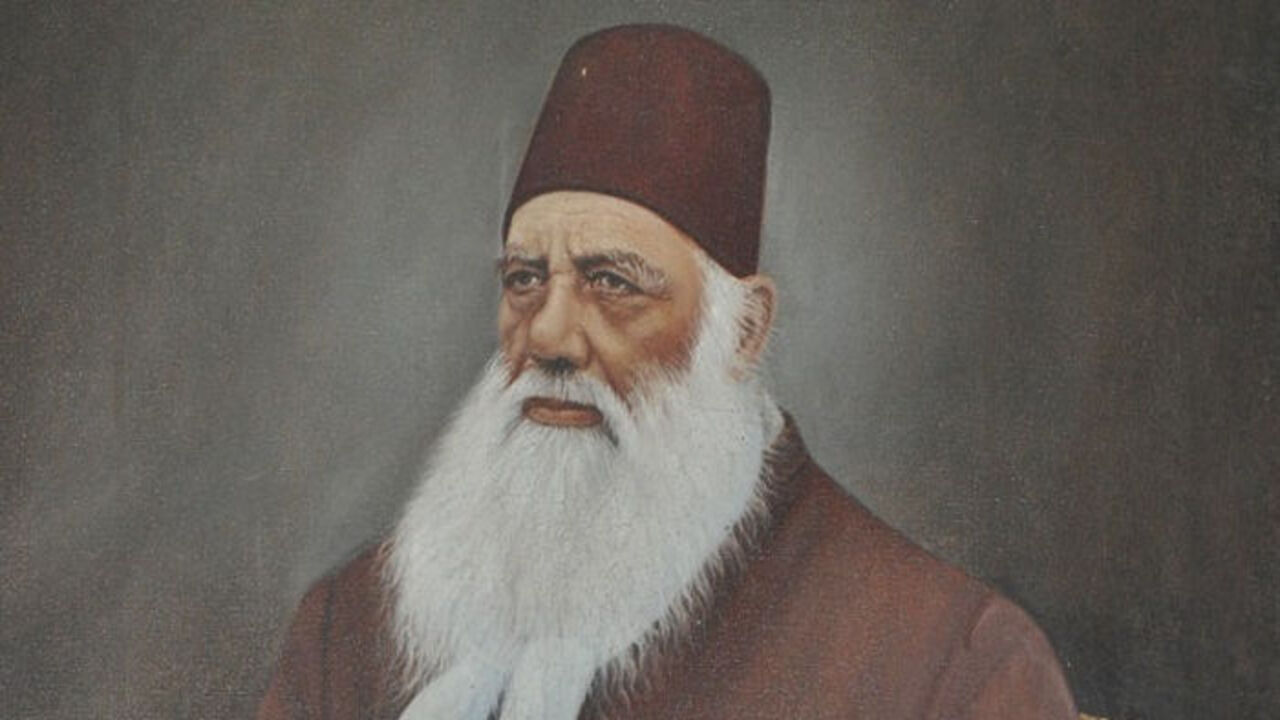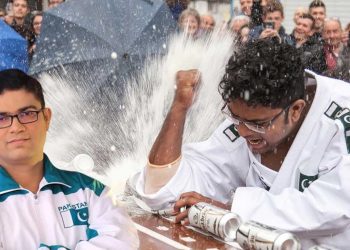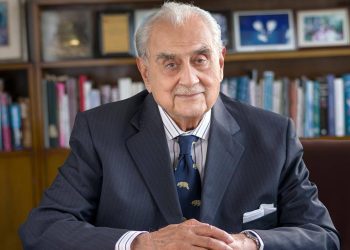Sir Syed Ahmad Khan, a visionary who carved a space for rationalist thought, gave a new direction to education, and laid the parameters of modernist Urdu prose. He did not only evolve a new philosophy and pedagogy for public instruction and write remarkable discursive prose, but also affected a change in the attitude of people, especially of the Muslim community, towards social, cultural, and national identity. He was an iconoclast who promoted a scientific view of life and found space for pure rationalism as opposed to romantic sentimentality. As he also influenced poets and writers, he came to be acknowledged and valued as one of the major reformers of modern India.
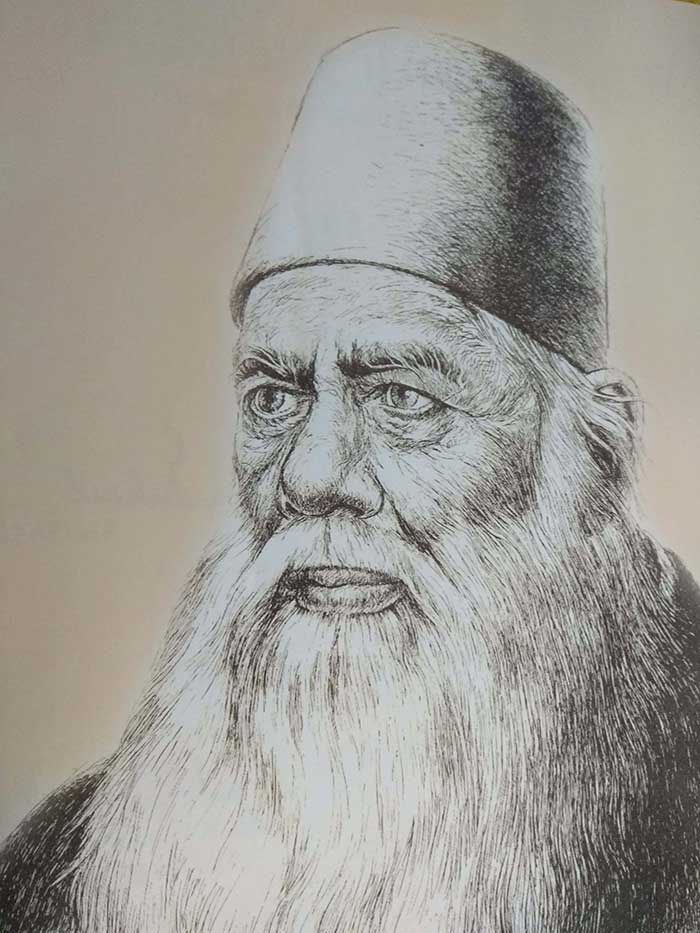
EARLY LIFE:
Sir Syed was born on October 17, 1817, in Delhi. His father, Syed Muttaqi Mohammad was an advisor to Emperor Akbar II, while his grandfather, Syed Hadi Alamgir, held a position of prominence in the Mughal court. His mother, Aziz-un-nisa, was a suave and highly cultured lady who brought up Syed in his formative years with great care. He received his early education from his maternal grandfather, Khwaja Fariduddin, and learnt about the workings of the courts from his uncle, Maulavi Mhammad Khalilullah.
Sir Syed, himself, was bestowed with the title of Jawa’d-ul-Daula and Arif-e-Jang by Bahadur Shah Zafar II. But he soon realized the crumbling position of the Mughals and their deviancy from religion, and hence kept at a distance from them.
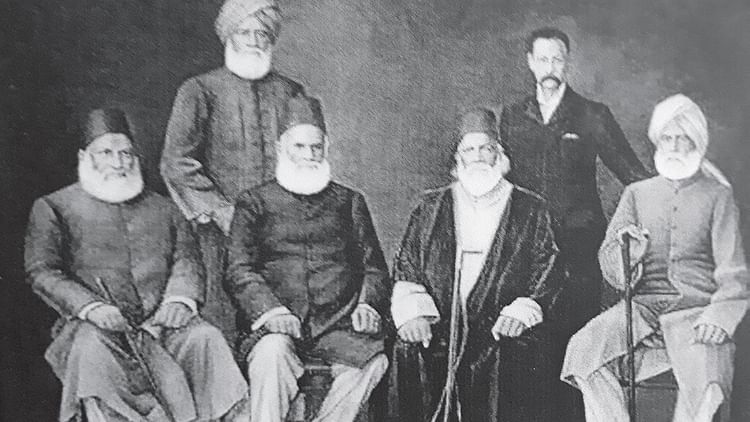
Revolt of 1857 and his Aligarh movement:
The 1857 revolt was one of the turning points in Syed Ahmed’s life. He clearly foresaw the imperative need for the Muslims to acquire proficiency in the English language and modern sciences, if the community were to maintain its social and political clout, particularly in Northern India.
He was one of those early pioneers who recognized the critical role of education in the empowerment of the poor and backward Muslim community. In more than one ways, Sir Syed was one of the greatest social reformers and a great national builder of modern India. He began to prepare the road map for the formation of a Muslim University by starting various schools. He instituted Scientific Society in 1863 to instill a scientific temperament into the Muslims and to make the Western knowledge available to Indians in their own language.
The Aligarh Institute Gazette, an organ of the Scientific Society, was launched in March 1866 and succeeded in agitating the minds in the traditional Muslim society. Anyone with a poor level of commitment would have backed off in the face of strong opposition but Sir Syed responded by bringing out another journal, Tehzibul Akhlaq which was rightly named in English as ‘Mohammedan Social Reformer’
In 1875, Sir Syed founded the Madarsatul Uloom in Aligarh and patterned the MAO College after Oxford and Cambridge universities that he went on a trip to London. His objective was to build a college in line with the British education system but without compromising its Islamic values.
He wanted this College to act as a bridge between the old and the new, the East and the West. While he fully appreciated the need and urgency of imparting instruction based on Western learning, he was not oblivious to the value of oriental learning and wanted to preserve and transmit to posterity the rich legacy of the past. Dr. Sir Mohammad Iqbal observes: “The real greatness of Sir Syed consists in the fact that he was the first Indian Muslim who felt the need of a fresh orientation of Islam and worked for it — his sensitive nature was the first to react to modern age”.
The aim of Sir Syed was not merely restricted to establishing a college at Aligarh but at spreading a network of Muslim Managed educational institutions throughout the length and breadth of the country keeping in view this end, he instituted All India Muslim Educational Conference that revived the spirit of Muslims at the national level. The Aligarh Movement motivated Muslims to help open a number of educational institutions. It was the first of its kind of such Muslim NGO in India, which awakened the Muslims from their deep slumber and infused social and political sensibility into them.
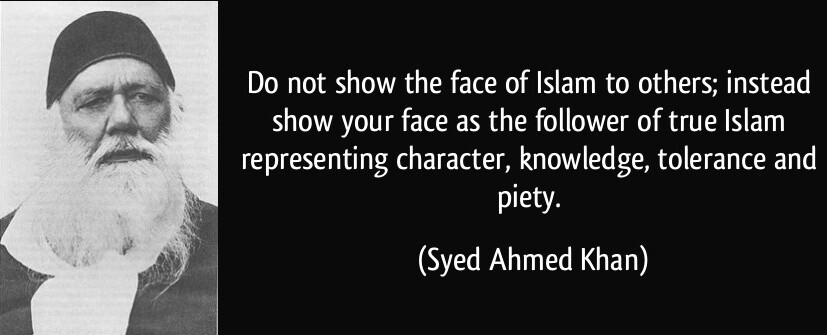
His works:
Sir Syed Ahmad Khan was a man of versatile personality. He rendered memorable contributions in the field of writings. Beginning at the age of 23, he started his career as an author writing religious texts. He was the first Muslim to produce a commentary on the Bible in which he tried to show that Islam was very close to Christianity in certain aspects. His other valuable tracts such as Loyal Muhammadans of India, Tabyin-ul-Kalam, and A Series of Essays on the Life of Muhammad (SAW) and Subjects Subsidiary Therein proved to be a milestone in bridging the difference between the British and the Muslims. Some religious works of him that deserve mention are Ahkam Tu’am Ahl-Kitab, Al-Du’a Wa’l Istajaba, Al-Nazar Fi Ba’z Masa’il Imam Al-Ghazzali, Tafsir-a-Samawat, Tahrir fi Usul al-Tafsir, Tarjama fawa’id al-afkar fi Amal al-farjar, along with such miscellaneous works as On the Use of the Sector (Urdu), Syed-ul-Akbar, Qaul-i-Matin dar Ibtal-i-Harkat i Zamin, Tashil fi Jar-a-Saqil, Ik Nadan Khuda Parast aur Dana dunyadar Ki Kahani, Kalamat-ul-Haqq.Sir Syed Ahmad Khan was a man of versatile personality. He rendered memorable contributions in the field of writings. Beginning at the age of 23, he started his career as an author writing religious texts. He was the first Muslim to produce a commentary on the Bible in which he tried to show that Islam was very close to Christianity in certain aspects. His other valuable tracts such as Loyal Muhammadans of India, Tabyin-ul-Kalam, and A Series of Essays on the Life of Muhammad (SAW) and Subjects Subsidiary Therein proved to be a milestone in bridging the difference between the British and the Muslims. Some religious works of him that deserve mention are Ahkam Tu’am Ahl-Kitab, Al-Du’a Wa’l Istajaba, Al-Nazar Fi Ba’z Masa’il Imam Al-Ghazzali, Tafsir-a-Samawat, Tahrir fi Usul al-Tafsir, Tarjama fawa’id al-afkar fi Amal al-farjar, along with such miscellaneous works as On the Use of the Sector (Urdu), Syed-ul-Akbar, Qaul-i-Matin dar Ibtal-i-Harkat i Zamin, Tashil fi Jar-a-Saqil, Ik Nadan Khuda Parast aur Dana dunyadar Ki Kahani, Kalamat-ul-Haqq.
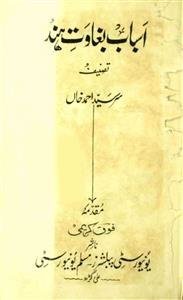
Death:
Sir Syed Ahmad Khan breathed his last on March 27, 1898. He is buried right along with the Sir Syed Masjid inside Aligarh University. His funeral was attended not only by thousands of Muslims but British officials as well. He revived the dormant consciousness of Muslims and through his educational and social reforms, he went down in Muslim history as arguably the most influential Indian politician of the 19th century.
After his death, his Muslims and English friends started raising money to fulfill Sir Syed’s dream of making the MAO college in a Muslim university. People loved him because in his life he was like a shady tree to them and after his death, they remembered him and showed their love for him by making efforts for raising the status of the college to the university, which came finally in 1920.
